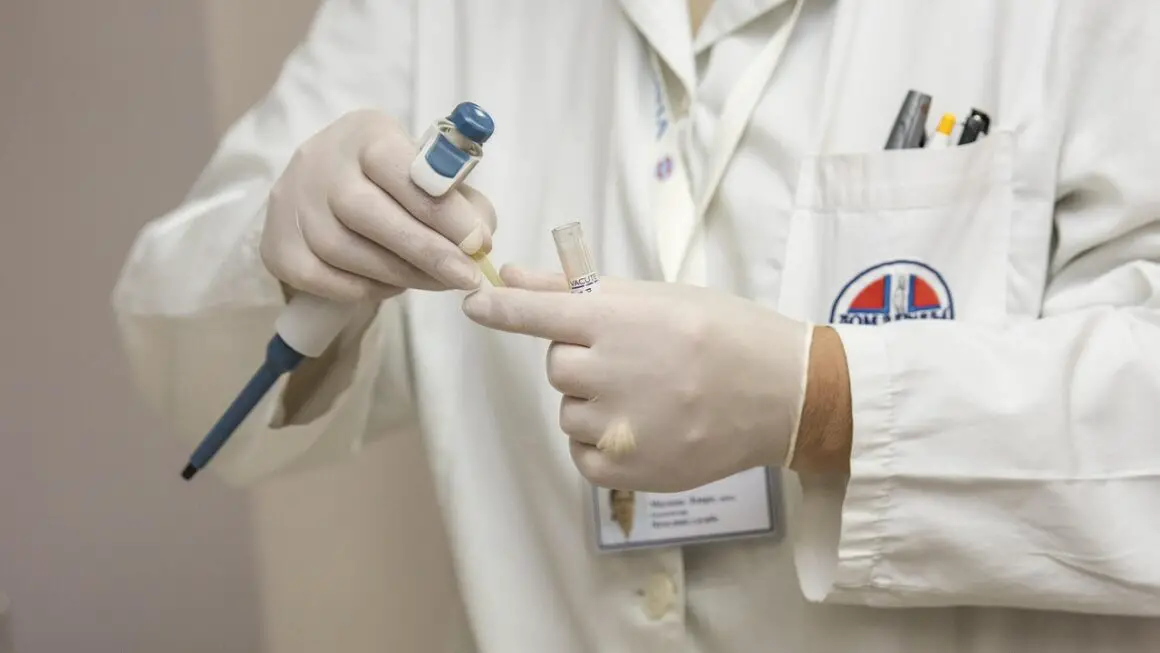A healthy heart is the engine that powers your life. Ensuring it’s running smoothly through regular heart checkups can significantly reduce your risk of cardiovascular disease, a leading cause of death worldwide. This blog post will guide you through everything you need to know about heart checkups, empowering you to take proactive steps towards a healthier future.
Why a Heart Checkup is Essential
Understanding Cardiovascular Disease (CVD)
Cardiovascular disease (CVD) encompasses a range of conditions affecting the heart and blood vessels. These include coronary artery disease (CAD), stroke, heart failure, and arrhythmias. According to the World Health Organization, CVDs are the number one cause of death globally, taking an estimated 17.9 million lives each year. Many of these deaths are preventable through early detection and management.
Benefits of Regular Heart Checkups
Regular heart checkups offer numerous advantages:
- Early Detection: Identifying potential problems before they become severe. This allows for timely intervention and treatment, preventing serious complications.
- Risk Assessment: Determining your individual risk factors for heart disease. Factors like family history, lifestyle choices (smoking, diet, exercise), and pre-existing conditions are considered.
- Personalized Prevention Strategies: Receiving tailored recommendations for lifestyle changes, such as diet modifications, exercise routines, and smoking cessation programs.
- Improved Quality of Life: Managing existing heart conditions effectively through medication and lifestyle adjustments, leading to a healthier and more active life.
- Reduced Healthcare Costs: Preventing serious cardiovascular events through proactive measures can significantly reduce long-term healthcare expenses.
- Example: Imagine someone with a family history of high cholesterol. A heart checkup could reveal elevated cholesterol levels early on. Dietary changes and medication, if necessary, could then be implemented to prevent the buildup of plaque in the arteries, reducing the risk of a heart attack later in life.
What Happens During a Heart Checkup
Initial Consultation and Medical History
The heart checkup typically begins with a detailed consultation with your doctor. This includes:
- Reviewing your medical history: Discussing your past illnesses, surgeries, and current medications.
- Gathering family history: Inquiring about any family history of heart disease, high blood pressure, or diabetes.
- Assessing lifestyle factors: Discussing your diet, exercise habits, smoking status, and alcohol consumption.
Physical Examination
A thorough physical examination is a crucial part of the checkup:
- Blood pressure measurement: Elevated blood pressure is a major risk factor for heart disease. Normal blood pressure is generally considered to be less than 120/80 mmHg.
- Heart rate and rhythm assessment: Checking for irregularities in your heartbeat.
- Listening to your heart: Using a stethoscope to listen for any unusual sounds, such as murmurs.
- Checking your pulses: Assessing the strength and regularity of your pulses in your arms and legs.
Diagnostic Tests
Depending on your risk factors and the findings of the initial assessment, your doctor may recommend further diagnostic tests:
- Electrocardiogram (ECG or EKG): This test records the electrical activity of your heart. It can detect arrhythmias, heart attacks, and other heart conditions.
- Blood tests: These tests measure cholesterol levels (total cholesterol, LDL, HDL, triglycerides), blood sugar levels (to check for diabetes), and other markers of heart health.
- Echocardiogram: This ultrasound of the heart provides images of its structure and function. It can detect valve problems, heart enlargement, and other abnormalities.
- Stress test: This test monitors your heart’s performance during exercise. It can help detect blockages in the arteries and assess your overall cardiovascular fitness.
- Cardiac CT scan: This imaging test uses X-rays to create detailed images of the heart and blood vessels. It can detect calcium buildup in the arteries (coronary artery calcium score).
- Example: A person experiencing chest pain might undergo an ECG and a stress test to determine if they have coronary artery disease. If the stress test is positive, a cardiac catheterization (an invasive procedure) might be recommended to visualize the coronary arteries and determine if there are any blockages.
Preparing for Your Heart Checkup
Before the Appointment
- Gather your medical history: Compile a list of your medications, allergies, and previous medical conditions.
- Note down any symptoms: Write down any symptoms you have been experiencing, such as chest pain, shortness of breath, or palpitations.
- Prepare a list of questions: Prepare a list of questions to ask your doctor about your heart health, risk factors, and preventative measures.
- Check with your insurance: Verify your insurance coverage for heart checkup services.
During the Appointment
- Be honest and open: Provide accurate and complete information to your doctor.
- Ask questions: Don’t hesitate to ask questions if you don’t understand something.
- Take notes: Jot down important information and instructions.
After the Appointment
- Follow your doctor’s recommendations: Adhere to the prescribed medications, lifestyle changes, and follow-up appointments.
- Review your test results: Discuss your test results with your doctor and understand their implications.
- Make necessary lifestyle changes: Implement the recommended lifestyle changes to improve your heart health.
Understanding Your Heart Health Numbers
Key Measurements and What They Mean
Understanding your heart health numbers empowers you to take control of your well-being. Here are some key measurements to pay attention to:
- Blood Pressure:
Systolic (top number): Measures the pressure in your arteries when your heart beats.
Diastolic (bottom number): Measures the pressure in your arteries when your heart rests between beats.
Target: Ideally, below 120/80 mmHg.
- Cholesterol:
Total Cholesterol: A measure of all cholesterol in your blood.
Target: Ideally, below 200 mg/dL.
LDL Cholesterol (bad cholesterol): Contributes to plaque buildup in arteries.
Target: Ideally, below 100 mg/dL (lower for those at high risk).
HDL Cholesterol (good cholesterol): Helps remove LDL cholesterol from arteries.
Target: Ideally, above 60 mg/dL.
Triglycerides: A type of fat in your blood.
Target: Ideally, below 150 mg/dL.
- Blood Sugar (Fasting):
Target: Ideally, below 100 mg/dL. Higher levels may indicate pre-diabetes or diabetes.
Actionable Steps Based on Results
- High Blood Pressure: Lifestyle changes (diet, exercise, stress management), medication.
- High Cholesterol: Lifestyle changes (diet, exercise), medication (statins).
- High Blood Sugar: Lifestyle changes (diet, exercise), medication (insulin or oral hypoglycemic agents).
- Example: If your LDL cholesterol is high, your doctor might recommend a low-saturated fat diet, regular exercise, and possibly a statin medication to lower your LDL levels and reduce your risk of heart disease. Increasing your fiber intake can naturally lower LDL as well.
Maintaining a Healthy Heart Beyond Checkups
Lifestyle Changes for a Healthier Heart
Even with regular checkups, maintaining a heart-healthy lifestyle is crucial.
- Healthy Diet:
Eat plenty of fruits, vegetables, and whole grains.
Choose lean protein sources, such as fish, poultry (without skin), and beans.
Limit saturated and trans fats, cholesterol, sodium, and added sugars.
Increase your intake of omega-3 fatty acids found in fatty fish like salmon.
- Regular Exercise:
Aim for at least 150 minutes of moderate-intensity aerobic exercise or 75 minutes of vigorous-intensity aerobic exercise per week.
Include strength training exercises at least two days per week.
Find activities you enjoy, such as walking, jogging, swimming, or cycling.
- Quit Smoking:
Smoking is a major risk factor for heart disease.
Seek support from your doctor, support groups, or smoking cessation programs.
- Manage Stress:
Practice relaxation techniques, such as yoga, meditation, or deep breathing exercises.
Get enough sleep.
Engage in activities you enjoy.
- Maintain a Healthy Weight:
Losing even a small amount of weight can improve your heart health.
Work with your doctor or a registered dietitian to develop a healthy eating plan and exercise program.
- Example: Instead of driving to the grocery store, consider walking or cycling. Prepare your meals at home to control ingredients and portion sizes. Incorporate stress-reducing activities like reading or spending time in nature into your daily routine.
Conclusion
Prioritizing your heart health is an investment in your overall well-being. Regular heart checkups, combined with a healthy lifestyle, can significantly reduce your risk of cardiovascular disease and help you live a longer, healthier life. Don’t wait until you experience symptoms; schedule a heart checkup today and take control of your cardiovascular health. Remember, proactive care is the best defense against heart disease.




